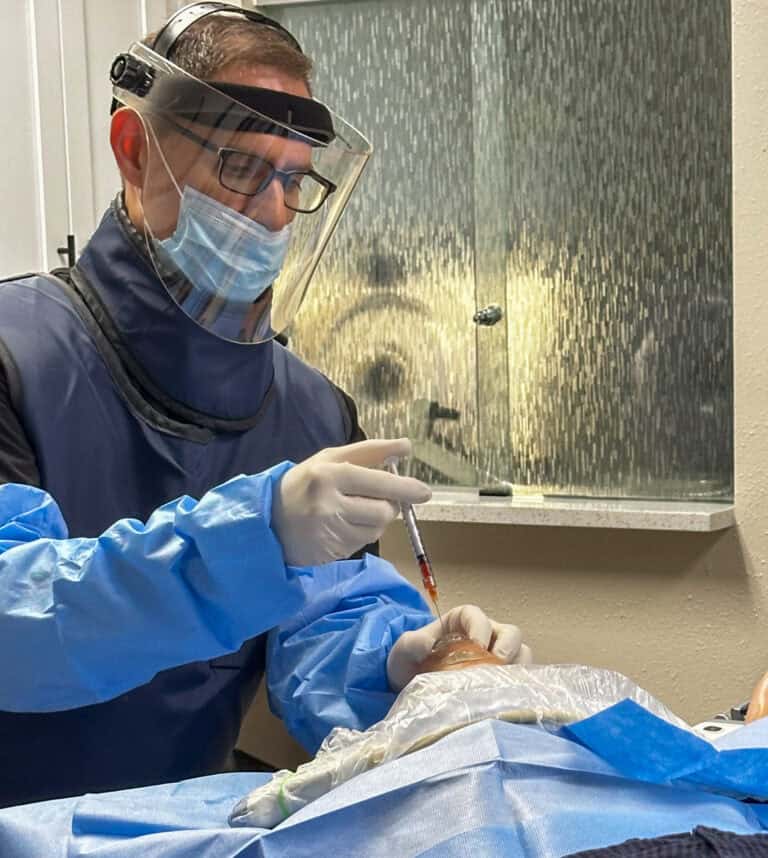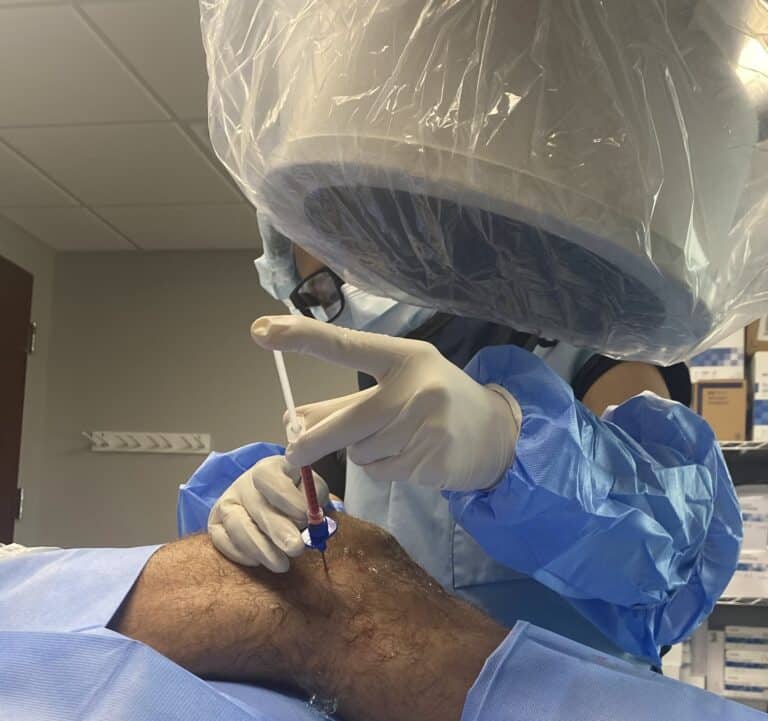In the realm of regenerative medicine, there are a few ways tissues can be treated. The type of injectate can vary, depending on a few factors, such as the severity of the damage (mild, moderate, or severe), the type of tissue involved (bone, muscle, ligament, tendon), and budget.
Since there are three types of main injectates that can be selected based on any of these factors, it is important to mention that our physicians at Regenexx at New Regeneration Orthopedics always practice evidence-based medicine to make the best decision with the patient. The concept of evidence-based medicine was made a keystone term in medicine in 1996, by Sackett et. al. in the British Medical Journal (BMJ). Evidence-based medicine is a term that governs a mandatory code of medical practice every practitioner should abide by. So, not only do our physicians abide by this code in their clinical decision-making, you should make sure every physician you see in your own healthcare abides by evidence-based medicine.
What is Evidence-Based Medicine?
Evidence-based medicine (EBM) is defined by three pillars, and you can see how they relate in the image below. These pillars are:
- The Physician’s Clinical Judgment
- The Relevant Scientific Evidence
- The Patient’s Values & Patient Education
These pillars are how a physician considers their recommendations for your orthopedic issue and what the options are.
Specifically, when it comes to regenerative medicine at Regenexx at New Regeneration Orthopedics, your physician follows the pillars of EBM when recommending a procedure. Here is what that looks like at Regenexx:
Pillar 1: The Physician’s Clinical Judgment
When a Regenexx Physician evaluates your injury and all of the supporting information (imaging, medical history, exam findings), they will make a recommendation about what the best course of action would be. It could be that the physician will recommend prolotherapy, PRP, or bone marrow concentrate.
The recommendation is based on the physician’s knowledge of the extent of your condition, and which injectate would yield the best results. Next week on this blog, we will discuss below the difference between prolotherapy, PRP, and Bone Marrow Concentrate (BMC)—the regenerative treatments that comprise 70% of all regenerative medicine treatments, combined.
Pillar 2: The Relevant Scientific Evidence
Our Regenexx physicians have the benefit of being a part of a large group of providers in the Regenexx network, all of whose patient outcomes are added to a registry. So, per body region or joint, there are patient-reported outcomes that help drive the support for which type of treatment works best in each area.
Additionally, new research studies evaluating patient results compared to alternative therapies or placebo help give our physicians data that confirm the treatment results.
In other cases, some studies span long periods of time comparing the effectiveness of different regenerative techniques. For example, Phillipe Hernigou published studies spanning 15 years, with one in particular comparing the effectiveness of two different types of knee injections. In this study, the clinically-routine inter-articular (in-joint) injection was compared to the more specialized inter-osseous (in bone) injections. The findings suggest the inter-osseous injections for these cases of knee osteoarthritis had more profound and lasting effects as compared to inter-articular injections. After this seminal study was published, Regenexx physicians became more apt to perform inter-osseous injections in similar cases in alignment with the literature.

Pillar 3: The Patient Education and Values
The clinician’s expertise and clinical judgment and the current literature then meet with the patient component of this Venn Diagram. In this pillar, the key is patient education.
A physician should have the time to explain the experience they have around your specific condition (Pillar 1) and the relevant research that supports it (Pillar 2). However, Pillar 3 is where the physician should also spend time educating the patient on the benefits, risks, and alternatives of their treatment recommendation.
So, if a Regenexx physician explains why they recommend an inter-osseous injection of the knee, they will explain why that is the recommended treatment for the best outcome based on the patient’s condition and the latest literature. But then they will also explain the benefit of this treatment, any potential risks or downtime, and any alternatives to this procedure. Alternatives may be a different type of regenerative procedure that would also work, but be less expensive. An alternative might be surgery, if the physician thinks you’re a borderline candidate for a regenerative procedure.
In general, any orthopedic physician should be offering an explanation of the benefits, risks and alternatives to their suggested course of treatment, or they’re not practicing evidence-based medicine.
How Does Evidence-Based Medicine Play into Your Regenerative Procedure?
All of this information helps set up the conversation around the three most-often used injectates in regenerative medicine: prolotherapy, PRP, and bone marrow concentrate (BMC). The table below was created by Chris Centeno, MD, and outlines the summary of each substance:
This table outlines each substance by category of cost density, benefit to the tissues, and target tissues. So, this information is paramount in a Regenexx doctor’s recommendation.
As a simple example of how this circles back to the EBM conversation, if someone has a severe joint arthritis issue, suggesting a BMC injection would yield the best result, but let’s say the patient has a PRP budget. The physician would suggest the BMC procedure based on their expertise and the recent literature, with PRP being an alternative option due to the patient’s values. The physician would also explain this treatment option comes with a benefit of helping the condition, but with a potential risk of needing a secondary procedure to yield the result they want.
Another example: a patient could have severe arthritis in the hip with dead portions of the bone in their hip. The physician says they recognize this patient’s desire to push off or avoid hip replacement at all costs. In this case, a Regenexx physician would recommend a BMC procedure, but given the severity of the case, explain it has a less-favorable outcome potential based on the registry data. The best possibility would be if this procedure reduces or eliminates their pain and improves function (Benefit). But it is also possible they could be getting the most potent procedure on the menu, but still find themselves needing surgery eventually. So it is up to the patient to decide if they would pursue the procedure, or explore the option of surgery (risk/alternative). This example is also evidence-based medicine.
The takeaway? This style of communication is non-negotiable when it comes to the practice of medicine. So, make sure you ask yourself if your orthopedic physician is upholding this standard when explaining your options.
Be sure to visit this blog next week for our next installment: The Difference Between PRP, Prolotherapy and BMC.










